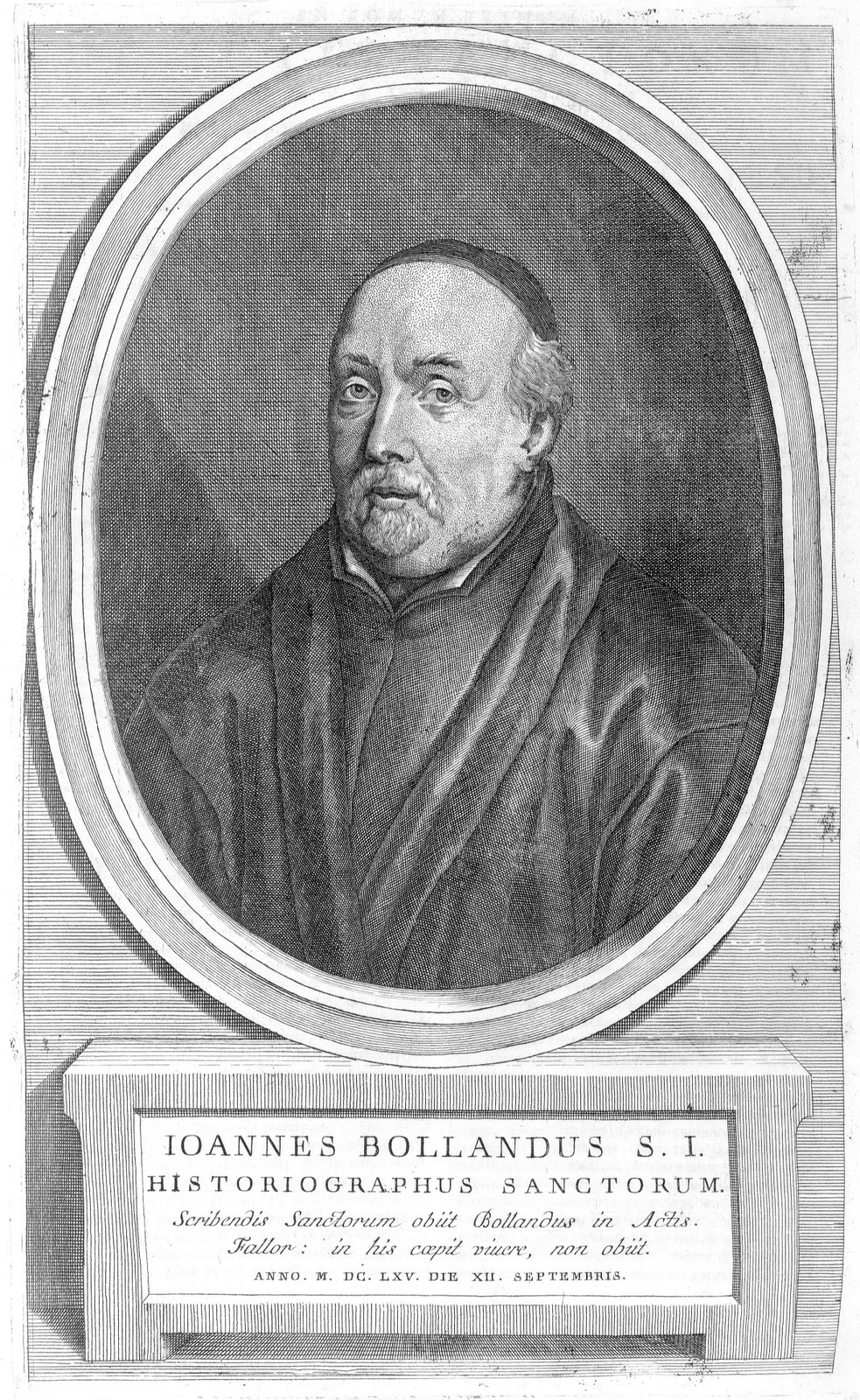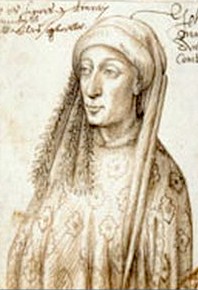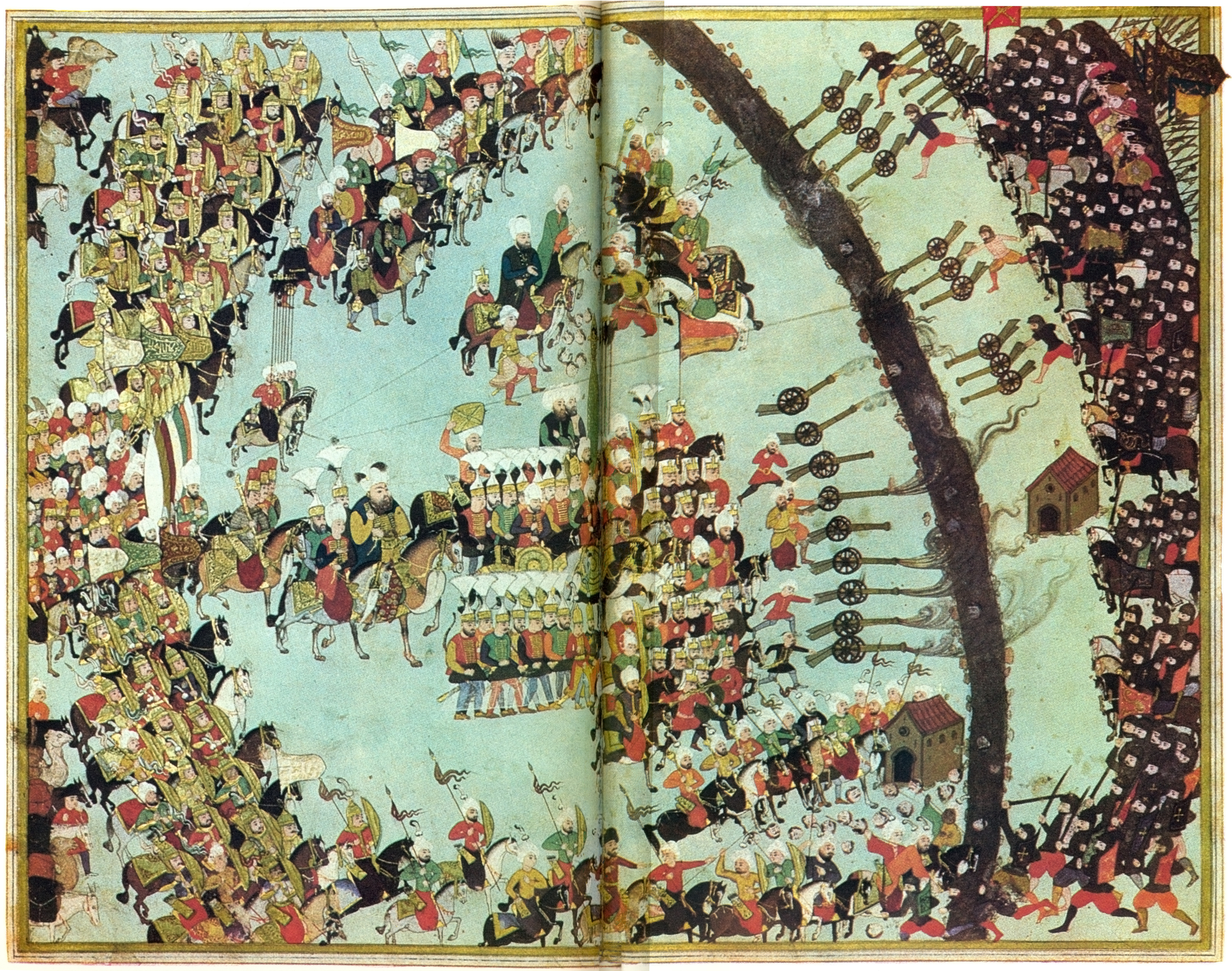|
Bollandus
Jean Bolland ( la, Johannes Bollandus) (13 August 1596 – 12 September 1665) was a Jesuit priest, theologian, and prominent Flemish hagiographer. Bolland's main achievement is the compilation of the first five volumes of the ''Lives of the Saints'' in Latin, called the ''Acta Sanctorum'', a series which was continued by others, who, after his death, formed the ''Society of Bollandists''. Life and work Jean Bolland was born 13 August 1596 in the village of Julémont, now part of Herve (Belgium), North-East of the city of Liège. The village of Bolland, after which the family took their name, is nearby. He entered the Society of Jesus in 1612 at Mechelen. After his studies at the Jesuit colleges of Maastricht and Antwerp, Bolland taught humanities in Roermond, Den Bosch, Brussels and Antwerp. In 1620 Bolland was sent to study theology at the University of Leuven. Four years later he received holy orders and then became prefect of studies at the Jesuit college of Mechelen. ... [...More Info...] [...Related Items...] OR: [Wikipedia] [Google] [Baidu] |
Bollandists
The Bollandist Society ( la, Societas Bollandistarum french: Société des Bollandistes) are an association of scholars, philologists, and historians (originally all Jesuits, but now including non-Jesuits) who since the early seventeenth century have studied hagiography and the cult of the saints in Christianity. Their most important publication has been the ''Acta Sanctorum'' (The Lives of the Saints). They are named after the Flemish Jesuit Jean Bollandus (1596–1665). ''Acta Sanctorum'' The idea of the ''Acta Sanctorum'' was first conceived by the Dutch Jesuit Heribert Rosweyde (1569–1629), who was a lecturer at the Jesuit college of Douai. Rosweyde used his leisure time to collect information about the lives of the saints. His principal work, the 1615 ''Vitae Patrum'', became the foundation of the ''Acta Sanctorum''. Rosweyde contracted a contagious disease while ministering to a dying man, and died himself on October 5, 1629, at the age of sixty. Father Jean Bollandus wa ... [...More Info...] [...Related Items...] OR: [Wikipedia] [Google] [Baidu] |
Acta Sanctorum
''Acta Sanctorum'' (''Acts of the Saints'') is an encyclopedic text in 68 folio volumes of documents examining the lives of Christian saints, in essence a critical hagiography, which is organised according to each saint's feast day. The project was conceived and begun by Jesuit Heribert Rosweyde. After his death in 1629, the Jesuit scholar Jean Bolland ('Bollandus', 1596–1665) continued the work, which was gradually finished over the centuries by the Bollandists, who continue to edit and publish the ''Acta Sanctorum''. The Bollandists oversaw the project, first in Antwerp and then in Brussels. The ''Acta Sanctorum'' began with two January volumes (for saints whose feast days were in January), published in 1643. From 1643 to 1794, 53 folio volumes of ''Acta Sanctorum'' were published, covering the saints from 1 January to 14 October. When the Jesuits were suppressed by the Habsburg governor of the Low Countries in 1788, the work continued at Tongerlo Abbey. After the creation ... [...More Info...] [...Related Items...] OR: [Wikipedia] [Google] [Baidu] |
Herve
Herve (; li, Herf; wa, Heve) is a city and municipality of Wallonia located in the province of Liège, Belgium. On January 1, 2018 Herve had a total population of 17,598. The total area is which gives a population density of . It is famed for its Herve cheese. Municipal merger Since January 1, 1977, the municipality consists of the following districts: , , , , , Herve, and Xhendelesse. Herve is currently constituted of 11 villages: Battice, Bolland, Bruyères, Chaineux, Charneux, Grand-Rechain, Herve, José, Julémont, Manaihant, Xhendelesse. There are a number of smaller villages in the Herve region, such as Hacboister (district of Bolland). Architecture * ''The Church of St John the Baptist'': built in the 17th century. The tower, with a height of , dates back to the 13th century. The bell tower is a distinctively crooked spire, in order to offer better resistance to the wind. The church was classed as a historic monument in 1934. * '' Château de Bolland'': a medi ... [...More Info...] [...Related Items...] OR: [Wikipedia] [Google] [Baidu] |
Old University Of Leuven
The Old University of Leuven (or of Louvain) is the name historians give to the university, or ''studium generale'', founded in Leuven, Brabant (then part of the Burgundian Netherlands, now part of Belgium), in 1425. The university was closed in 1797, a week after the cession to the French Republic of the Austrian Netherlands and the principality of Liège (jointly the future Belgium) by the Treaty of Campo Formio. The name was in medieval Latin Studium generale Lovaniense or Universitas Studii Lovaniensis, in humanistical Latin Academia Lovaniensis, and most usually, Universitas Lovaniensis, in Dutch Universiteyt Loven and also Hooge School van Loven. It is commonly referred to as the University of Leuven or University of Louvain, sometimes with the qualification "old" to distinguish it from the Catholic University of Leuven (established 1835 in Leuven). This might also refer to a short-lived but historically important State University of Leuven, 1817–1835. The immedi ... [...More Info...] [...Related Items...] OR: [Wikipedia] [Google] [Baidu] |
Jesuit Historiography
The Society of Jesus ( la, Societas Iesu; abbreviation: SJ), also known as the Jesuits (; la, Iesuitæ), is a religious order (Catholic), religious order of clerics regular of pontifical right for men in the Catholic Church headquartered in Rome. It was founded in 1540 by Ignatius of Loyola and six companions, with the approval of Pope Paul III. The society is engaged in evangelization and apostolic ministry in 112 nations. Jesuits work in education, research, and cultural pursuits. Jesuits also give retreats, minister in hospitals and parishes, sponsor direct social and humanitarian ministries, and promote Ecumenism, ecumenical dialogue. The Society of Jesus is consecrated under the patron saint, patronage of Madonna della Strada, a title of the Blessed Virgin Mary, and it is led by a Superior General of the Society of Jesus, Superior General. The headquarters of the society, its Curia, General Curia, is in Rome. The historic curia of Ignatius is now part of the attached to t ... [...More Info...] [...Related Items...] OR: [Wikipedia] [Google] [Baidu] |
People From Herve
A person ( : people) is a being that has certain capacities or attributes such as reason, morality, consciousness or self-consciousness, and being a part of a culturally established form of social relations such as kinship, ownership of property, or legal responsibility. The defining features of personhood and, consequently, what makes a person count as a person, differ widely among cultures and contexts. In addition to the question of personhood, of what makes a being count as a person to begin with, there are further questions about personal identity and self: both about what makes any particular person that particular person instead of another, and about what makes a person at one time the same person as they were or will be at another time despite any intervening changes. The plural form "people" is often used to refer to an entire nation or ethnic group (as in "a people"), and this was the original meaning of the word; it subsequently acquired its use as a plural form of per ... [...More Info...] [...Related Items...] OR: [Wikipedia] [Google] [Baidu] |
1665 Deaths
Events January–March * January 5 – The ''Journal des sçavans'' begins publication of the first scientific journal in France. * February 15 – Molière's comedy '' Dom Juan ou le Festin de pierre'', based on the Spanish legend of the womanizer Don Juan Tenorio and Tirso de Molina's Spanish play '' El burlador de Sevilla y convidado de piedra'', premieres in Paris at the Théâtre du Palais-Royal''. * February 21 – In India, Shivaji Bhonsale of the Maratha Empire captures the English East India Company's trading post at Sadashivgad (now located in the Indian state of Karnataka). * February – In England, Dr. Richard Lower performs the first blood transfusion between animals. According to his account to the Royal Society journal ''Philosophical Transactions'' in December, Dr. Lower "towards the end of February... selected one dog of medium size, opened its jugular vein, and drew off blood, until its strength was nearly gone. Then, to make ... [...More Info...] [...Related Items...] OR: [Wikipedia] [Google] [Baidu] |
1596 Births
Events January–June * January 6– 20 – An English attempt led by Francis Drake to cross the Isthmus of Panama ends in defeat. * January 28 – Francis Drake dies of dysentery off Portobelo. * February 14 – Archbishop John Whitgift begins building his hospital at Croydon. * April 9 – Siege of Calais: Spanish troops capture Calais. * May 18 – Willem Barents leaves Vlie, on his third and final Arctic voyage. * June – Sir John Norreys and Sir Geoffrey Fenton travel to Connaught, to parley with the local Irish lords. * June 10 – Willem Barents and Jacob van Heemskerk discover Bear Island. * June 17 – Willem Barents discovers Spitsbergen. * June 24 – Cornelis de Houtman arrives in Banten, the first Dutch sailor to reach Indonesia.. July–December * July 5 – Capture of Cádiz: An English fleet, commanded by Robert Devereux, 2nd Earl of Essex, and Lord Howard of Effingham, sacks Cádiz. * July 14 – King Dominicus Corea (Edirille Bandara) is beheaded ... [...More Info...] [...Related Items...] OR: [Wikipedia] [Google] [Baidu] |
Pope Alexander VII
Pope Alexander VII ( it, Alessandro VII; 13 February 159922 May 1667), born Fabio Chigi, was head of the Catholic Church and ruler of the Papal States from 7 April 1655 to his death in May 1667. He began his career as a vice- papal legate, and he held various diplomatic positions in the Holy See. He was ordained as a priest in 1634, and he became bishop of Nardo in 1635. He was later transferred in 1652, and he became bishop of Imola. Pope Innocent X made him secretary of state in 1651, and in 1652, he was appointed a cardinal. Early in his papacy, Alexander, who was seen as an anti-nepotist at the time of his election, lived simply; later, however, he gave jobs to his relatives, who eventually took over his administration. His administration worked to support the Jesuits. However, his administration's relations with France were strained due to his frictions with French diplomats. Alexander was interested in architecture and supported various urban projects in Rome. He als ... [...More Info...] [...Related Items...] OR: [Wikipedia] [Google] [Baidu] |
Daniel Van Papenbroek
Daniel Papebroch, S.J., (17 March 1628 – 28 June 1714) was a Flemish Jesuit hagiographer, one of the Bollandists. He was a leading revisionist figure, bringing historical criticism to bear on traditions of saints of the Catholic Church. Life Papebroch was born in 1628, the son of a wealthy merchant of Antwerp, then in the Duchy of Brabant, part of the Spanish Netherlands. He attended the Jesuit college in his hometown. He came from a pious family that had chosen Jesuit Jean Bolland as its spiritual director. Bolland took a great interest in Daniel's education and encouraged him to learn Greek and other languages and to study literary composition. From 1644 to 1646 Papebroch studied philosophy at Douai, after which he entered the novitiate of the Society of Jesus. He was ordained a Catholic priest in 1658. In 1659 Papebroch began his work with Bolland, in the scholarly study of the hagiography of the Catholic saints. About this time, the Jesuit superiors of the order relie ... [...More Info...] [...Related Items...] OR: [Wikipedia] [Google] [Baidu] |
Godfrey Henschen
Godfrey Henschen (also ''Henskens'' or ''Godefridus Henschenius'' in Latin), 21 June 1601 – 11 September 1681, was a Jesuit hagiographer, one of the first Bollandists, from the Spanish Netherlands. Life Henschen was born at Venray, Limburg (Netherlands), Limburg, in the Low countries.De Smedt, Charles. "The Bollandists." The Catholic Encyclopedia Vol. 2. New York: Robert Appleton Company, 1907. 2 May 2020 He was the son of Henry Henschen, a cloth merchant, and Sibylla Pauwels. He studied the humanities at the Jesuit college of Bois-le-Duc (today the town of 's-Hertogenbosch) and entered the novitiate of the Society of Jesus at Mechlin on 22 October 1619. He taught successively Greek, poetry and rhetoric at Bergues, Bailleul, Nord, Bailleul, Ypres, and Ghent. He was Holy Orders, ordai ... [...More Info...] [...Related Items...] OR: [Wikipedia] [Google] [Baidu] |
Liessies Abbey
Liessies Abbey was a Rule of St. Benedict, Benedictine monastery in the village of Liessies, near Avesnes-sur-Helpe, in the Archdiocese of Cambrai and the ''département'' of Nord (département), Nord, France. First foundation It was founded in 751 and dedicated to Saint Lambert (martyr), Saint Lambert. It seems to have been destroyed twice in the following centuries. By tradition the founder is named as Wilbert, a Poitou, Poitevin nobleman, and the first abbot as his son Guntrad or Gondrad. Wilbert's daughter, Hiltrude of Liessies, Hiltrude, refused to marry and became a nun here. She died in 785. After miracles were reported at her tomb, the Bishop of Cambrai organised her formal veneration, but was unable to establish monks here, as the house was at that time in the possession of a community of Canon (priest), canons, who refused to co-operate. Benedictine foundation The Benedictine monastery was finally established between about 1095 and 1110 by Theodoric of Avesnes and his w ... [...More Info...] [...Related Items...] OR: [Wikipedia] [Google] [Baidu] |



_1938.jpg)


